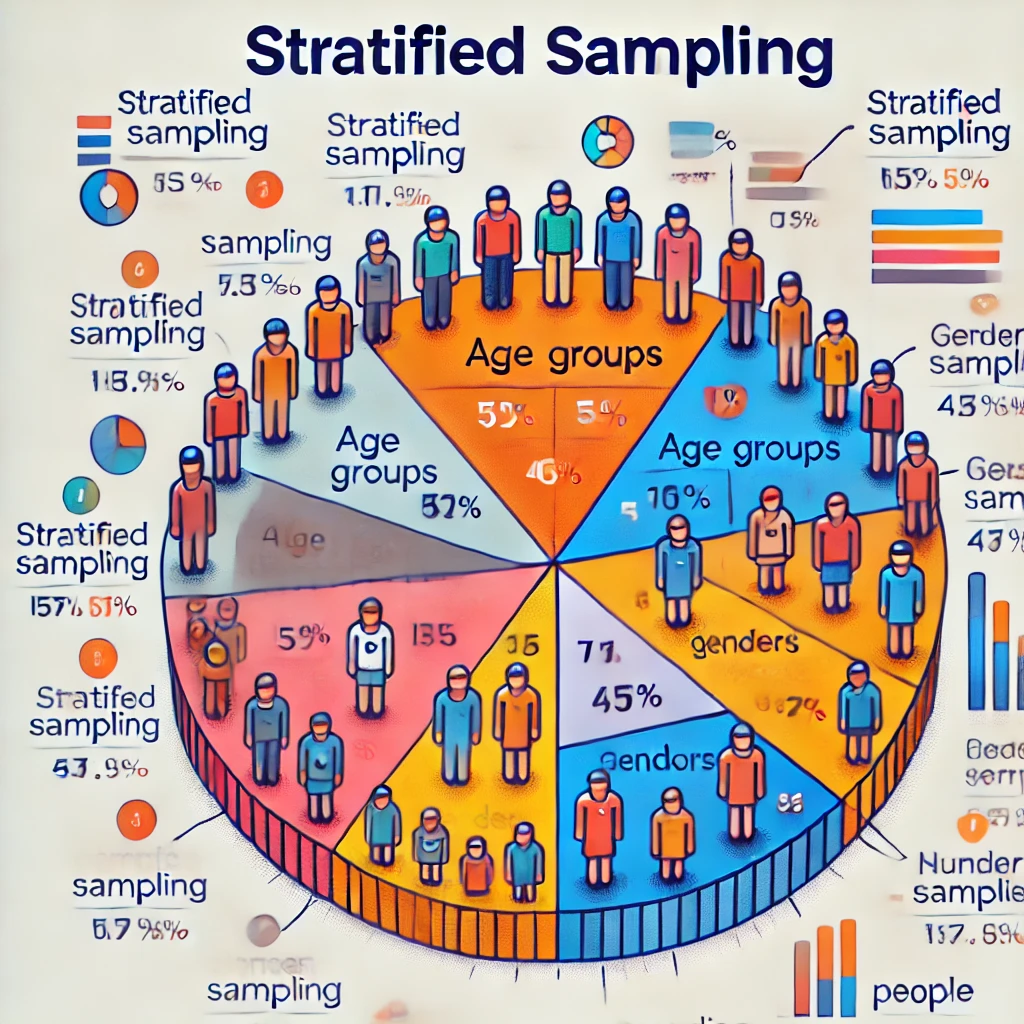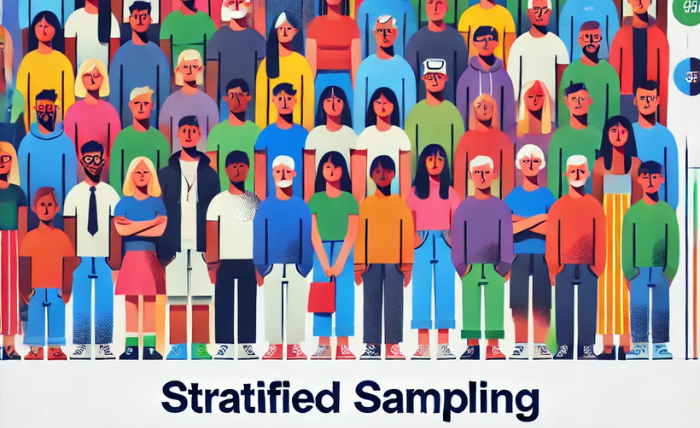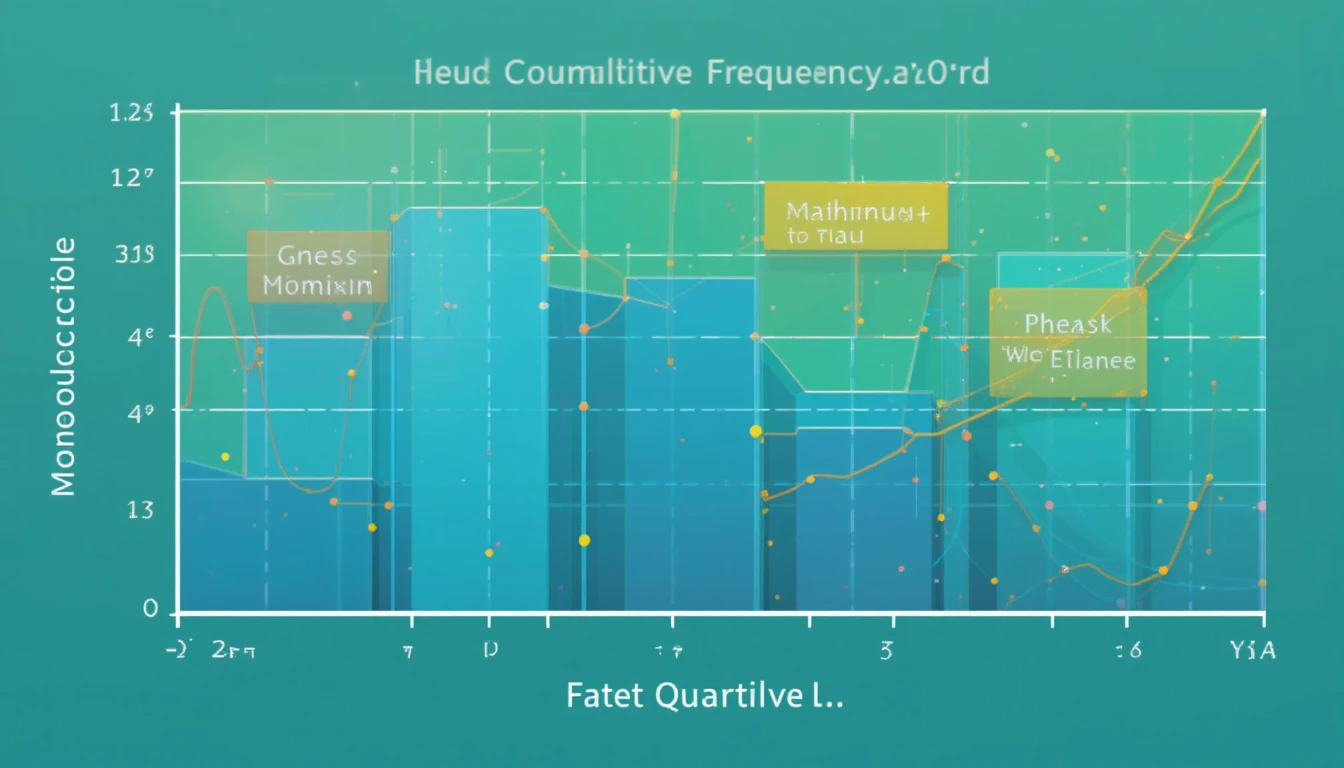If you’re interested in statistics or have ever needed to understand how data is collected, you’ve probably heard of something called stratified sampling. But don’t worry if you aren’t sure what it is yet—this guide will break it down for you. And to make it even easier, we’ll go through the topic with the help of a helpful resource, Stratified Sampling Maths Genie.
In this post, we’ll explore what stratified sampling is, why it’s so useful, and how you can apply it in real-life situations. Whether you’re a student trying to get your head around the topic, a researcher looking to gather data more accurately, or just someone who loves learning, this article will help you understand stratified sampling in simple terms.
What is Stratified Sampling?
Stratified sampling is a way of choosing a sample from a larger group (called a population) where the population is divided into smaller, more specific groups called strata. Think of it as picking slices from different sections of a cake instead of just choosing random pieces. This ensures you have a good variety of the different types of people or things in your sample.
For example, imagine you’re doing a survey on people’s favorite TV shows, and you want to make sure you include both young and older people. Rather than randomly picking people from the entire population, you’d split the population into age groups (the strata) and pick samples from each age group.
So, what’s the big deal about stratified sampling maths genie? Well, this method makes sure that the sample represents all parts of the population accurately, leading to more reliable and valid results.
Why Should You Use Stratified Sampling?
One of the biggest advantages of stratified sampling maths genie is that it helps you avoid bias. When you use random sampling, sometimes you might accidentally pick more people from one group than another. This can lead to results that don’t reflect the population as a whole. With stratified sampling, you make sure that every important group is included in the sample.
For example, if you want to survey people about their opinions on a new law, and your population is made up of young adults, middle-aged adults, and seniors, you might end up getting more answers from one group than another if you just use random sampling. Stratified sampling maths genie makes sure each age group is represented according to its proportion in the population.
How Does Stratified Sampling Work?
The basic idea behind stratified sampling maths genie is pretty straightforward. Here’s how it works in simple steps:
- Divide the population into strata – The first thing you do is divide your population into different groups based on shared characteristics. These could be age, gender, income, education level, etc.
- Choose the sample size from each stratum – Once you’ve divided the population, you pick a sample from each group. The number of people you choose from each group should be proportional to the group’s size in the overall population.
- Combine the samples – After selecting your samples from each stratum, you put them together to form your full sample. This way, you have a sample that accurately represents all parts of the population.
Types of Stratified Sampling
There are two main types of stratified sampling: proportional stratified sampling maths genie and equal stratified sampling. Here’s how they differ:
- Proportional Stratified Sampling: In this method, you select samples from each stratum based on its size in the entire population. If a certain age group makes up 30% of the population, you would select 30% of your sample from that group.
- Equal Stratified Sampling: In this method, you select the same number of samples from each stratum, no matter how big or small each group is in the population. This method is less common because it doesn’t always reflect the population accurately.
Key Benefits of Stratified Sampling
Let’s take a closer look at some of the reasons why stratified sampling maths genie is such a great method for gathering data.
1. More Accurate Results
Because you’re making sure all key groups are represented, your results are more likely to reflect the true opinions or behaviors of the entire population. This can be especially helpful in research where precision is important, such as in medical studies or public opinion surveys.
2. Reduces Bias
Stratified sampling maths genie helps to reduce bias in your data collection. Without it, certain groups may be underrepresented in your sample, leading to inaccurate results. By using this method, you’re ensuring that each group has an equal chance of being represented.
3. Cost-Effective
In many cases, stratified sampling maths genie can help reduce the cost of collecting data. Instead of having to survey a large number of people randomly, you can be more targeted in your sampling, which makes the process faster and less expensive.
When Should You Use Stratified Sampling?
Stratified sampling maths genie is best used when the population you’re studying has clearly defined groups (or strata) that you want to make sure are well-represented in your sample. This method is especially useful in situations where you’re dealing with complex populations with multiple categories, like:

- Political polling (to ensure that different political parties are represented)
- Market research (to capture the preferences of different age or income groups)
- Public health studies (to understand how different groups of people may be affected by health conditions or interventions)
Example of Stratified Sampling in Action
Let’s go through an example to understand how stratified sampling maths genie works in real life.
Imagine you’re conducting a survey about student satisfaction at a school with 1,000 students. The school has 500 male students, 300 female students, and 200 non-binary students. If you want to survey 100 students, you could use stratified sampling to make sure each gender group is represented proportionally.
- For the male students, you’d pick 50 students (50% of the total population is male).
- For the female students, you’d pick 30 students (30% of the total population is female).
- For the non-binary students, you’d pick 20 students (20% of the total population is non-binary).
By doing this, you ensure that your sample accurately reflects the gender distribution of the entire school, leading to more reliable survey results.
Maths Genie Stratified Sampling
If you’re looking to improve your understanding of stratified sampling maths genie, there’s a great tool called Maths Genie that provides helpful resources and practice problems. This resource breaks down complex concepts into easy-to-understand explanations. With its interactive tutorials and practice questions, Maths Genie makes learning about stratified sampling much simpler and more fun!
Using tools like Maths Genie allows you to practice stratified sampling problems and understand the math behind it. The more you practice, the better you’ll get at applying stratified sampling in real-world situations.
Conclusion
Stratified sampling is a powerful technique for making sure your research results are as accurate and unbiased as possible. Whether you’re studying for an exam, conducting research, or just curious about statistics, understanding stratified sampling maths genie will help you collect better data and make smarter decisions. With Maths Genie and a bit of practice, you’ll be a pro at stratified sampling maths genie in no time!





